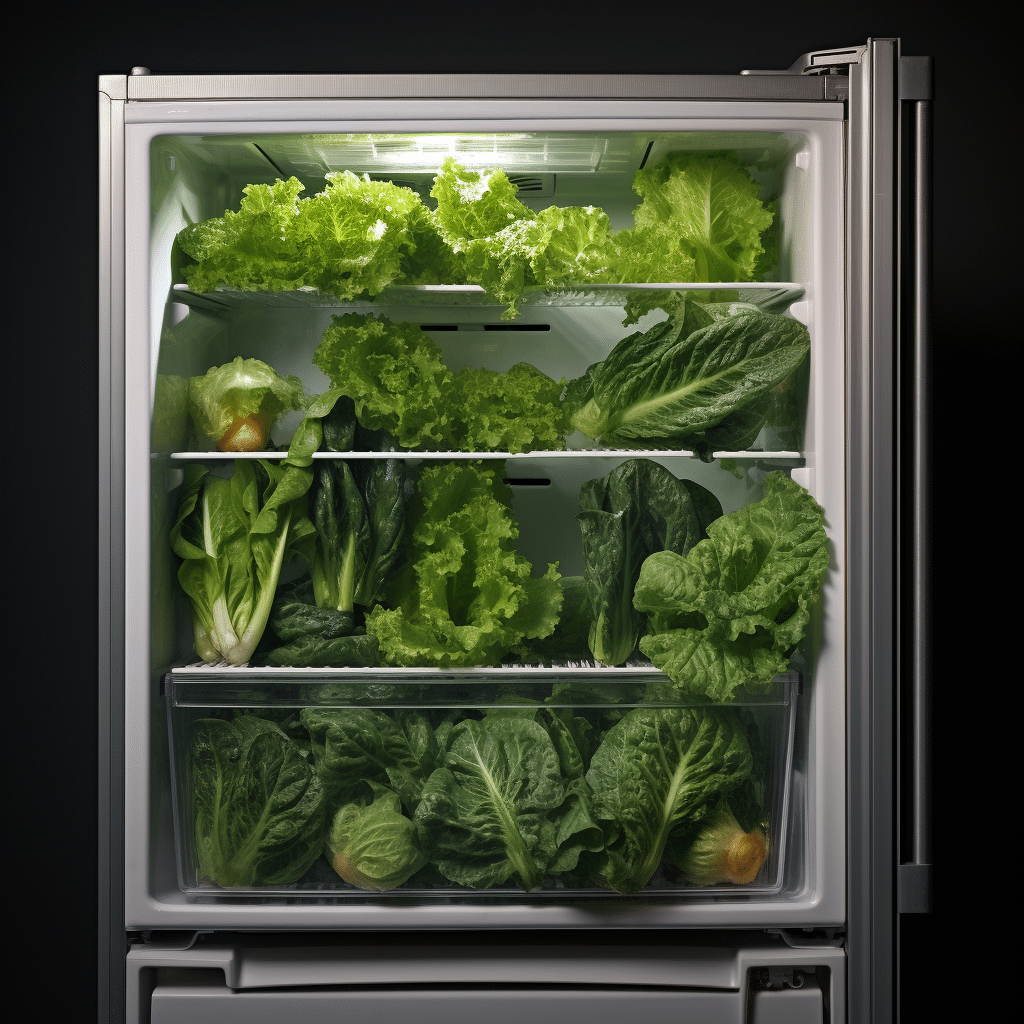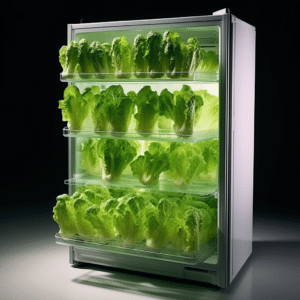
Should Lettuce Be Refrigerated? Storage Tips and Benefits
Lettuce is a delicious and healthy vegetable. You can use it in meat salads or mix it in smoothies. Being a leafy vegetable, lettuce is very satisfying and a great addition to those trying to lose weight. This vegetable boosts a unique nutrition profile and offers various health benefits.
If you have ever bought lettuce for salads or other culinary uses; you may wonder if you need to consume the whole of it or if you can store the remaining one. In case you remain with a considerable amount of lettuce and don’t want to discard it, how do you keep it? Do you have to refrigerate it? Hang in here until the end to learn whether you have to refrigerate lettuce or not.

Does Lettuce Have To Be Refrigerated?
Yes, lettuce needs to be refrigerated to remain fresh and retain its best qualities. As a perishable vegetable, lettuce should not stay at room temperatures for long; otherwise, you risk it becoming wilted or infested with harmful bacteria, leading to food-borne diseases. So, don’t let your lettuce stay on the shelf for long, and refrigerate as soon as possible to keep it fresh and crisp.
When lettuce is left on the kitchen counter unwrapped, it will become wilted after a few hours. And that’s not what you want. To prevent that, store your lettuce in the fridge at temperatures 40 degrees Fahrenheit or lower. Here’s what happens when you refrigerate lettuce:
The lettuce becomes crisp and fresh
Storing lettuce in the fridge help preserve its moisture. This lead to fresher and more crisp lettuce leaves. On the other hand, storing lettuce over the counter for long causes the leaves to wilt, shrink, and change their color to brown. The lettuce may also become slimy and shows other signs of spoilage. In such a case, discard the lettuce as it has already gone bad.
It prevents the growth of bacteria
Fridge temperatures are low, hindering the growth of bacteria. When you keep lettuce in the fridge, the low temperatures prevent bacteria growth in the lettuce, rendering it safe. According to the CDC, lettuce can harbor bacteria, leading to food-borne illnesses. And that’s why there have been reports of disease outbreaks when people consume contaminated packaged salads, romaine lettuce, and baby spinach.
How Long Does Lettuce Last In The Fridge?
How long lettuce can last in the fridge depends on the type of lettuce and how you store it. Generally, lettuce lasts for around one week if well stored in the refrigerator at 40 degrees Fahrenheit or lower. However, it’s recommended to use refrigerated lettuce within 3 to 5 days to enjoy its freshness and peak quality. After this duration, the lettuce begins losing its crispiness and color. Here’s to more on storing lettuce in the fridge.
Lettuce head
For the lettuce head, wash it carefully and dry it with a paper towel. Afterward, wrap the whole lettuce head in a wet paper towel and place it in plastic wrap. Or you can opt to store the lettuce head wrapped in a damp paper towel in a plastic zipper bag. Next, store the lettuce head on the top shelves of your fridge.
Lettuce leaves
In the case of lettuce leaves, it’s advisable first to wash them and dry them using paper towels. Alternatively, you can dry the lettuce leaves in a salad spinner. Once dried, take a bowl and place the lettuce leaves in it. Then wrap the bowl with lettuce leaves using a cling film or plastic wrap. Make some holes in the cling film or plastic wrap using a needle or pinhole. Remember, the lettuce leaves need some air circulation to remain fresh.
Note that lettuce heads have a longer shelf life than lettuce leaves. That’s so because of their large surface area, enhancing air circulation.
How Long Does Lettuce Stay Unrefrigerated?
Sometimes you may get so busy and leave your lettuce on the counter without placing them in the fridge. This may leave you wondering if your vegetable is still safe to eat or has become infested with bacteria.
As a step guide, your lettuce can safely stay outside the fridge for two hours before being spoiled or contaminated. So, you don’t have to throw your lettuce if it’s been on the counter for not more than two hours. Simply rinse your lettuce under clean running water, and you are good to use it.
Should You Freeze Lettuce?
Freezing lettuce is a good way of storing it, especially if you don’t plan to use it in the next couple of days. When freezing lettuce leaves, it’s best to blanch them first rather than freezing them as they are.
Blanching lettuce is pretty simple. Start by separating the lettuce leaves and then wash them. Take a large bowl of ice water and place it aside. Boil water in a large saucepan or pot until it starts boiling. Drop the lettuce leaves into the boiling water and hold it there for approximately 30 seconds.
Next, remove the lettuce leaves from the boiling water and immediately put them in the ice water. Doing so stops the cooking process. Remove the leaves from the cold water and lay them on paper towels to dry. Once dried, portion the leaves in rigid containers or zip-top bags. Lastly, freeze the lettuce for up to three months.
When thawing the lettuce, defrost them in the fridge rather than in cold water or microwave. Place the frozen lettuce leaves in the refrigerator and leave them for a couple of hours or overnight. Your lettuce should be completely thawed and ready for use.

Conclusion
Does lettuce have to be refrigerated? Yes, lettuce needs to be refrigerated. Doing so ensures the lettuce remains fresh and crisp, preserving its best qualities. Storing lettuce in the fridge also ensures it doesn’t become infested with harmful bacteria, leading to food-borne illnesses. So, always refrigerate your lettuce as soon as possible to preserve its freshness and prevent bacterial growth. And if you must leave them on the counter, do so for a maximum of two hours only. Exceeding that time will facilitate the development of harmful micro-organisms.